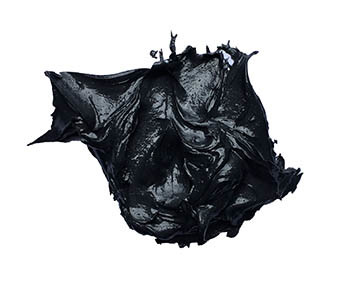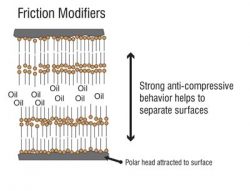Bacteria or Fungus in the Machine Sump
At some point, your metalworking fluid will go bad. Hopefully, in most cases it has ran through its effective life and can safely be removed or recharged with a fresh batch. However, sometimes a fluid’s life will be cut short due to unforeseen circumstances. This may involve machine leaks, breakdowns, or outside contamination. In some instances, your fluid and machine may be filled with bacteria or fungus. When this happens, it is imperative to stop operations and remove all fluid from the sump to prevent any further issues.
If there is any remaining contaminated fluid still in the machine, it will decrease the life and effectiveness of the new charge as the fungus and bacteria will continue to thrive in the existing fluid. It is best to also run a cleaner through the machine to help clean hard-to-reach areas such as pumps and hoses. In addition to cleaning out the contaminated fluid, the cleaner removes process oils, gummy deposits or oil, grease, swarf and other outside contaminants. Monroe Fluid Technology’s Astro-Clean A contains special additives designed to render the machine neutral of bacteria and fungus.
Bacteria and fungi grow in the presence of increased surface area in a fluid. As more bacteria and fungus are in the machine, the faster the growth. This exponential growth problem can wreak havoc on your machine and lead to serious problems. That is why it is important to be proactive in managing your fluid. This will lead to reduced down time and increased performance. The main component of fluid maintenance is following the manufacturers recommended concentration and regularly checking the fluid and adding any additives necessary to maintain the highest performance.
Biocides and Metalworking Fluid Additives
One key additive is biocide. Biocides are designed to kill bacteria, fungus, and other living microbes that will damage the fluid. These additives can simply be added to any sump or central system. Grotan is designed specifically for metalworking fluids to extend fluid life. Grotan is meant to be added at 0.15% (1500 ppm) and will fight bacteria and fungus. Many products are formulated with a biocide, like Grotan, to help protect machinery, tools, and work pieces.
Metalworking fluids with biocides are constructed with recommended concentrations in mind. This matters when a machine may be running “lean” on a fluid. If the manufacturer calls for 4%, but the machine is running at 2%, the machine only has half as much additives as needed. There must be a minimum level of biocide present in a solution in order for it to be effective. If there is not enough biocide, the bacteria will not disappear and slowly but surely repopulate. Therefore, it is imperative to follow manufacturer guidelines to enough there is enough biocide and other additives in your solution.
To ensure proper performance, it is important to regularly check the concentration of the solution to ensure the product performs as expected. Using refractometers to measure the Brix/concentration is crucial in maintaining an aqueous solution. This allows users to see the exact concentration and make adjustments as necessary. It is recommended to record the concentration level daily. Due to water evaporation, it is important to add concentrate to your sump to maintain recommended concentration. Never add just water or concentrate, it is recommended to add both to maintain the sump for longer tool life. Mixers are recommended to ensure consistent refills and measurements.
Cleaning Best Practices
It is also important to hand-wash/hand-wipe reachable areas of the machine to remove any solids from the sump. If these solids are not removed, it can result in continued growth of fungus or bacteria. Fungus typically grows by attaching itself to a solid in the sump or system. Theses solids may be outside contamination or smaller clusters of fungus. Therefore, it is crucial to remove solids and deposits before AND after running a cleaning solution through your machine.
If you are unable to dedicate a time to clean and service the machine, the cleaner can be added to the metalworking fluid solution at a concentration of 1-3%. This allows for cleaning while machining parts. Build-up will release from the machine as production continues. It is important to remove these residues and solids after the system is drained. As new fluid flows through the machine after recharging, some deposits may dislodge and appear in the sump. This is normal and should occur during the first week of a new charge.
Contamination that Grows Bacteria and Fungus
In addition to using a cleaner after draining the sump, it is important to follow fluid maintenance best practices. For example, it is recommended to have some method of skimming tramp oil. This can be done by hand or by having an oil skimmer installed in your tank or sump. When tramp oil gets into the mixture, contaminants from the oil can become “food” for bacteria. The tramp oil will also sit on the top of the sump and provide a “seal” which will allow anaerobic bacteria to thrive and multiply. This results in rancidity, which can create less than ideal work environments.
Sometimes outside contaminants can get into the sump and can create surface areas for bacteria and fungus to attach themselves and grow. This build-up can lead to dead zones in the machine where fluid flow is limited or halted completely. It is important to have mechanisms in place to regularly remove solids from the sump. Some examples of tools include: magnetic wheels, conveyors, and indexable filters. In the case of fungi, the fungal mass will remain in the system since it will not disintegrate in the fluid. Therefore, it is important to remove any fungal mass to prevent future growth. Having these items in the machine allow for solid removal and higher performing fluids.
Twin Specialties Can Help
If your sump is filled with harmful microbes, we are here to help. Twin Specialties has a variety of products and resources available to help get rid of microbes. We offer cleaners and biocides that can be incorporated into your sump and metalworking fluids. Contact us for a coolant management guide, a site visit, or fluid testing. We can discuss how to fix your sump and establish practices to uphold the integrity of your metalworking fluids.


